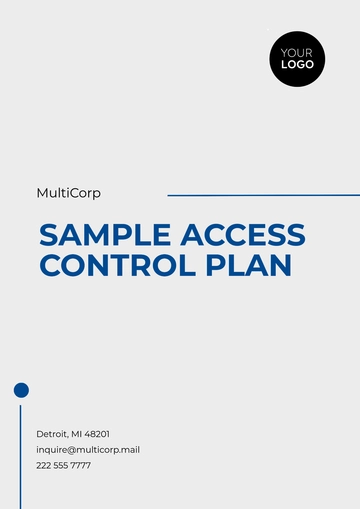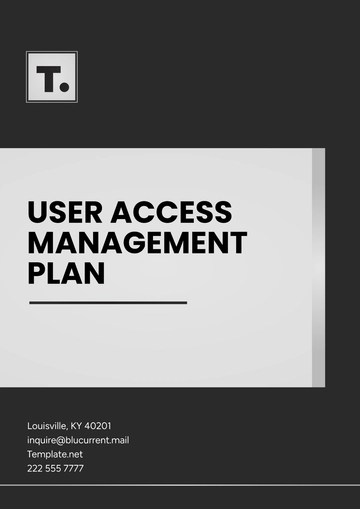Free Parking Lot Security Plan

I. Introduction
The purpose of this Parking Lot Security Plan is to provide a comprehensive overview of strategies and measures designed to ensure the safety and security of individuals and vehicles in the parking lot environment. The implementation of a robust parking lot security strategy will mitigate potential risks, enhance user confidence, and promote a safer environment for all users. A secure parking lot can improve customer satisfaction, reduce liability, and protect valuable assets.
II. Security Assessment
A. Current Security Measures
A thorough evaluation of existing security systems, including closed-circuit television (CCTV), lighting, and patrols, will be conducted to identify strengths and weaknesses. This assessment will focus on:
CCTV Coverage: Review the number and placement of cameras to ensure blind spots are minimized.
Lighting Conditions: Assess current lighting levels during nighttime operations to ensure visibility.
Security Patrols: analyze the frequency and timing of patrols to optimize coverage during peak hours.
B. Risk Analysis
A detailed risk assessment will be conducted to identify potential threats to the parking lot environment, including theft, vandalism, or unauthorized access. The analysis will include:
Threat | Likelihood | Impact |
|---|---|---|
Theft | Moderate | High |
Vandalism | High | Moderate |
Unauthorized Access | Low | Low |
Safety Hazards (slips, trips) | Moderate | Moderate |
C. Vulnerability Identification
Identify specific vulnerabilities, such as:
Inadequate signage indicating security presence.
Insufficient barriers preventing unauthorized access.
Lack of emergency communication options.
III. Security Measures
A. Surveillance Systems
System Upgrade: Upgrade and integrate surveillance systems to cover all areas effectively. Regularly maintain and test cameras to ensure optimal performance.
Install high-definition CCTV cameras at entrances, exits, and throughout the parking area, ensuring comprehensive coverage.
Implement motion sensor cameras in low-traffic areas for enhanced monitoring.
Ensure signage is visible to indicate surveillance is in operation, which serves as a deterrent.
Remote Monitoring: Establish a remote monitoring system to enable real-time surveillance and response capabilities.
B. Lighting Improvements
Enhanced Lighting: Implement improved lighting throughout the parking area to increase visibility and deter criminal activity.
Install energy-efficient LED lights for brightness and lower energy consumption.
Ensure all entry and exit points are well-lit, including pathways and pedestrian areas.
Conduct regular audits of lighting conditions and replace faulty equipment promptly.
Emergency Lighting: Integrate emergency lighting systems that activate in the event of power failure.
C. Access Control
Access Control Systems: Introduce advanced access control systems to monitor and limit entry to authorized personnel only.
Implement electronic gate systems with card or code access for authorized vehicles.
Deploy security personnel for manual checks during peak hours to maintain vigilance.
License Plate Recognition: Consider integrated license plate recognition systems for enhanced control and to keep a record of all vehicles entering and exiting.
IV. Personnel and Training
A. Security Personnel
Adequate Staffing: Ensure adequate staffing of trained security personnel to patrol and monitor the parking area.
Conduct regular training sessions on security protocols, emergency response, and customer service skills.
Equip personnel with necessary communication devices for immediate reporting.
Incident Response Team: Establish a dedicated incident response team trained to manage emergencies effectively.
B. Training Programs
Comprehensive Training: Develop comprehensive training programs for staff to handle various security situations effectively, including:
Conflict resolution.
Emergency first aid and CPR.
Protocols for reporting suspicious activity.
Regular Drills: Conduct regular drills to ensure preparedness for emergencies, including theft, fire, or medical emergencies.
V. Emergency Response Plan
Formulate an emergency response plan specific to the parking lot environment, covering various scenarios such as:
Theft or vandalism incidents.
Medical emergencies (e.g., injuries or health issues).
Fire or hazardous material incidents.
Natural disasters (e.g., severe weather).
The plan should include designated evacuation routes, communication protocols, and contact information for local emergency services.
VI. Evaluation and Maintenance
Regular Evaluations: Regularly evaluate security measures and maintenance schedules to ensure systems remain effective and up-to-date. Conduct quarterly assessments and updates to the security plan based on emerging threats and technological advancements.
Feedback Mechanism: Establish a feedback mechanism for users to report security concerns or suggest improvements.
Performance Metrics: Implement performance metrics to measure the effectiveness of security initiatives, such as incident reports, response times, and user satisfaction surveys.
VII. Conclusion
Adopting a comprehensive parking lot security plan is essential for ensuring the safety of individuals and their properties. By implementing these strategies, the parking facility will not only provide peace of mind but also maintain its integrity and enhance its reputation as a secure environment. Continuous improvement and adaptation to new security challenges will foster a culture of safety and confidence among all users.
- 100% Customizable, free editor
- Access 1 Million+ Templates, photo’s & graphics
- Download or share as a template
- Click and replace photos, graphics, text, backgrounds
- Resize, crop, AI write & more
- Access advanced editor
Enhance the safety of your parking facilities with the customizable Parking Lot Security Plan Template, offered by Template.net. This downloadable and printable template provides a comprehensive framework to ensure optimal security. Easily editable in our AI Editor Tool, you can tailor the plan to fit your specific requirements, ensuring both efficiency and safety. Get started today with this essential tool!
You may also like
- Finance Plan
- Construction Plan
- Sales Plan
- Development Plan
- Career Plan
- Budget Plan
- HR Plan
- Education Plan
- Transition Plan
- Work Plan
- Training Plan
- Communication Plan
- Operation Plan
- Health And Safety Plan
- Strategy Plan
- Professional Development Plan
- Advertising Plan
- Risk Management Plan
- Restaurant Plan
- School Plan
- Nursing Home Patient Care Plan
- Nursing Care Plan
- Plan Event
- Startup Plan
- Social Media Plan
- Staffing Plan
- Annual Plan
- Content Plan
- Payment Plan
- Implementation Plan
- Hotel Plan
- Workout Plan
- Accounting Plan
- Campaign Plan
- Essay Plan
- 30 60 90 Day Plan
- Research Plan
- Recruitment Plan
- 90 Day Plan
- Quarterly Plan
- Emergency Plan
- 5 Year Plan
- Gym Plan
- Personal Plan
- IT and Software Plan
- Treatment Plan
- Real Estate Plan
- Law Firm Plan
- Healthcare Plan
- Improvement Plan
- Media Plan
- 5 Year Business Plan
- Learning Plan
- Marketing Campaign Plan
- Travel Agency Plan
- Cleaning Services Plan
- Interior Design Plan
- Performance Plan
- PR Plan
- Birth Plan
- Life Plan
- SEO Plan
- Disaster Recovery Plan
- Continuity Plan
- Launch Plan
- Legal Plan
- Behavior Plan
- Performance Improvement Plan
- Salon Plan
- Security Plan
- Security Management Plan
- Employee Development Plan
- Quality Plan
- Service Improvement Plan
- Growth Plan
- Incident Response Plan
- Basketball Plan
- Emergency Action Plan
- Product Launch Plan
- Spa Plan
- Employee Training Plan
- Data Analysis Plan
- Employee Action Plan
- Territory Plan
- Audit Plan
- Classroom Plan
- Activity Plan
- Parenting Plan
- Care Plan
- Project Execution Plan
- Exercise Plan
- Internship Plan
- Software Development Plan
- Continuous Improvement Plan
- Leave Plan
- 90 Day Sales Plan
- Advertising Agency Plan
- Employee Transition Plan
- Smart Action Plan
- Workplace Safety Plan
- Behavior Change Plan
- Contingency Plan
- Continuity of Operations Plan
- Health Plan
- Quality Control Plan
- Self Plan
- Sports Development Plan
- Change Management Plan
- Ecommerce Plan
- Personal Financial Plan
- Process Improvement Plan
- 30-60-90 Day Sales Plan
- Crisis Management Plan
- Engagement Plan
- Execution Plan
- Pandemic Plan
- Quality Assurance Plan
- Service Continuity Plan
- Agile Project Plan
- Fundraising Plan
- Job Transition Plan
- Asset Maintenance Plan
- Maintenance Plan
- Software Test Plan
- Staff Training and Development Plan
- 3 Year Plan
- Brand Activation Plan
- Release Plan
- Resource Plan
- Risk Mitigation Plan
- Teacher Plan
- 30 60 90 Day Plan for New Manager
- Food Safety Plan
- Food Truck Plan
- Hiring Plan
- Quality Management Plan
- Wellness Plan
- Behavior Intervention Plan
- Bonus Plan
- Investment Plan
- Maternity Leave Plan
- Pandemic Response Plan
- Succession Planning
- Coaching Plan
- Configuration Management Plan
- Remote Work Plan
- Self Care Plan
- Teaching Plan
- 100-Day Plan
- HACCP Plan
- Student Plan
- Sustainability Plan
- 30 60 90 Day Plan for Interview
- Access Plan
- Site Specific Safety Plan










